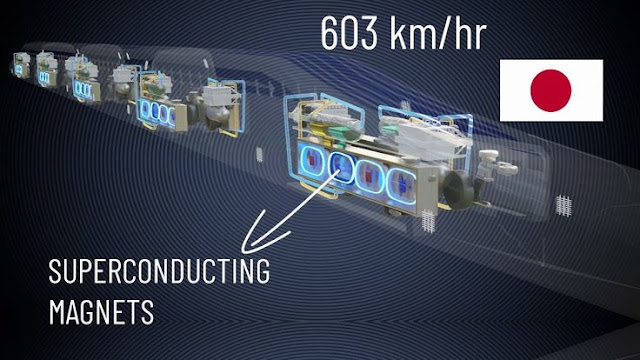on video The Fastest train ever built | The complete physics of it
Happy Friday! In early March, we wrote a piece about how the 760 miles per hour Hyperloop could become the fastest way to travel and forever change the future of transportation. The idea behind the hyperloop was first conceived by Tesla CEO Elon Musk in 2012. It was part of Musk's effort to bring about his industrial experiment to build high-speed underground transportation systems in dense urban areas.
Unlike the current traditional mode of transportation, the hyperloop capsules or pods carrying passengers travel through nearly airless tubes or tunnels to reduce friction, which allows the pods to travel at up to 750 miles per hour. Today, there are a dozen hyperloop projects going around the globe including Virgin Hyperloop, Tesla, and others. French startup Hyperloop Transportation Technologies (HTT) is also testing its new full-scale track in Toulouse, France.
While hyperloop technology is not yet ready for commercial use, the MagLev train (magnetic levitation) is another system of train transportation that has been in use for more than a decade. For many years, the Maglev trains have set several world's speed records. The world's fastest train is Japan's SCmaglev (superconducting maglev) with a speed as high as 600 km per hour. The train was developed by the Central Japan Railway Company (JR Central) and the Railway Technical Research Institute.
Today, there are six commercial Maglev train systems currently in operation around the world. One is located in Japan, two in South Korea, and three in China. However, Japan's SCmaglev MagLev train is quite unique and superior to the other trains. Running at more than 600 km per hour, it has achieved the status of 'fastest train.'
The SCmaglev train uses superconducting magnets, which is why it is called SC MagLev. Once charged with an exciting current, the superconducting magnets of this train produce a circulating DC current and strong magnetic field forever, with zero loss. SCmaglev train is projected to overtake other magnetic levitation technologies by the year 2027. The same technology is poised to connect New York City to Washington DC in just one hour by 2030.
The video below examines the physics behind the SCmaglev train and three major things required to successfully operate a magnetically levitated train—propulsion, levitation, and three guidance. Thanks to Lesics Engineers for putting this video together. We recommend you check out their other
Happy Friday! In early March, we wrote a piece about how the 760 miles per hour Hyperloop could become the fastest way to travel and forever change the future of transportation. The idea behind the hyperloop was first conceived by Tesla CEO Elon Musk in 2012. It was part of Musk's effort to bring about his industrial experiment to build high-speed underground transportation systems in dense urban areas.
Unlike the current traditional mode of transportation, the hyperloop capsules or pods carrying passengers travel through nearly airless tubes or tunnels to reduce friction, which allows the pods to travel at up to 750 miles per hour. Today, there are a dozen hyperloop projects going around the globe including Virgin Hyperloop, Tesla, and others. French startup Hyperloop Transportation Technologies (HTT) is also testing its new full-scale track in Toulouse, France.
While hyperloop technology is not yet ready for commercial use, the MagLev train (magnetic levitation) is another system of train transportation that has been in use for more than a decade. For many years, the Maglev trains have set several world's speed records. The world's fastest train is Japan's SCmaglev (superconducting maglev) with a speed as high as 600 km per hour. The train was developed by the Central Japan Railway Company (JR Central) and the Railway Technical Research Institute.
Today, there are six commercial Maglev train systems currently in operation around the world. One is located in Japan, two in South Korea, and three in China. However, Japan's SCmaglev MagLev train is quite unique and superior to the other trains. Running at more than 600 km per hour, it has achieved the status of 'fastest train.'
The SCmaglev train uses superconducting magnets, which is why it is called SC MagLev. Once charged with an exciting current, the superconducting magnets of this train produce a circulating DC current and strong magnetic field forever, with zero loss. SCmaglev train is projected to overtake other magnetic levitation technologies by the year 2027. The same technology is poised to connect New York City to Washington DC in just one hour by 2030.
The video below examines the physics behind the SCmaglev train and three major things required to successfully operate a magnetically levitated train—propulsion, levitation, and three guidance. Thanks to Lesics Engineers for putting this video together. We recommend you check out their other








No comments